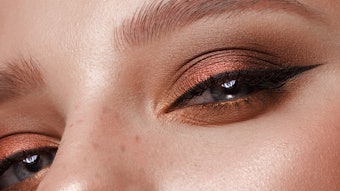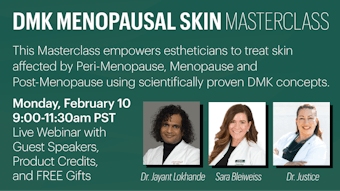
Abstract: Making patients happy with their procedures’ results should be the No. 1 priority in cosmetic medicine. In order to achieve that end, however, it’s important to remember that beauty is in the eye of the beholder. The earliest origins of cosmetic surgery dealt with people’s desire to create an outlook for themselves that made them happier, and it’s time to incorporate that kind of thinking back into today’s medical aesthetic practices.
As I see it, the key to achieving a successful cosmetic medical practice is to focus on one goal: patient satisfaction. A happy patient is really the only outcome that matters. However, attaining satisfaction is highly individual. I continue to be amazed by what one person finds disfiguring another can find insignificant or even attractive.
Recently, I had a patient come in crying, “Doctor, you have to help me. I am so miserable, everybody is staring at me. I can’t go out of my house. It is paralyzing.” As I sat listening to her, I couldn’t help noticing the large, eight-centimeter stellate depressed scar running across her right cheek.
Continuing to question her about her dilemma, I asked, “How long have you been bothered by your condition?”
She responded, “About two months.”
I found this interesting, because the cheek scar looked much older. She then indicated her concern was elsewhere. She pointed to a small, two-millimeter red capillary lesion on her right temporal forehead, and said, “Doctor, can’t you see the blemish? Everybody sees it, and it’s killing me! You have to fix it!” The scar across her cheek from a dog bite at the age of two didn’t bother her at all. She didn’t even notice it. So I treated the blemish, and she left my office with a big smile and a satisfying experience.
The eye of the beholder
This scenario forces us to be reminded that it is about who we are treating. By making my patients happy, I have achieved the goal. It’s not about what I think is beautiful—it is about what the patient wants treated. Of course, within reason, except for the 7–10% of the population that suffers from body dysmorphic disorder (BDD), our job is to treat the psyche of our patients as much—if not more so—than the physical.
With this in mind, it is conceivable the most practical class we took in medical school was psychiatry. Somewhere along the way, cosmetic medicine got derailed. The physician achieving self-satisfying, heroic outcomes in an attempt to design the ideal human form became the rage, and a rash of unnatural, overdone Barbie dolls surfaced, misbranding the field of plastic surgery in particular, and aesthetic medicine in general. But treating the patient’s mental well-being has been at the core of the field from its inception, and a look back to the beginning of cosmetic medicine is warranted for all who practice it.
Changing through time
Cosmetic medicine originated not as a treatment to enhance the beauty of the elite, but more as a service trade allowing one to pass into society without discriminating characteristics. Beginning with the Romans and Greeks, plastic surgery allowed conquered nomadic populations to assimilate and hide evidence of a nefarious past or membership to an unacceptable cult. The first cosmetic surgeries were performed on early Hebrews, Egyptians and Phoenicians.
For 2,500 years, cosmetic medicine philosophy and techniques didn’t change much—that is, until the early 20th century. Following World War I, soldiers survived battlefield wounds and returned home with disfiguring facial wounds that prevented them from being visible in public. These disenchanted and disfigured veterans wanted to return to society and pass without being recognized. They desired form, function and assimilation.
One post-World War I surgeon was Jacques Joseph, a German surgeon who was known for his skills at reconstructing the complex facial wounds of veterans. He translated his skills and knowledge to alter characterizing facial features, such as the noses of healthy ethnic males and females wanting to look “more German.” And thus was born elective cosmetic surgery. However, the goal of this new trade was not perfecting the human form or achieving ultimate beauty, but making patients happy by allowing them the ability to integrate seamlessly into society.
However, after World War II and the advent of antibiotics and safer forms of anesthesia, cosmetic surgery migrated from a tool of inclusion to a tool of separation. Since the days of Nefertiti and Cleopatra, those who have felt they belong to the elite class of society used whatever they could to separate themselves from the underclass, and cosmetic medicine became the latest instrument of the privileged used to flaunt their identity.
Like many of the newest trends and fads in pop culture, it started with movie stars. Famous pinups such as Marilyn Monroe and Rita Hayworth were getting plastic surgery, and no longer was it a vehicle to blend unnoticed into society. Rather it was now being used to stand out. And cosmetic surgeons, in parallel, responded by offering physically altering treatments that were bold, large and sure to emphasize sexually characterizing features of beauty and youth.
Cosmetic surgery lost some of its original manifesto of allowing one to pass into society unnoticed. Now it became a tool to reinforce class distinction, and a level of being obviously altered was tolerated. Moreover, while wanting to look one’s best is a cornerstone of human behavior, the ability to extend attractiveness or youthfulness beyond what was predetermined genetically became a possibility for an emerging upper class, perhaps leading to its current misrepresentation.
To the masses
However, much of that changed when the cosmetic benefits of Botox were discovered. A wrinkle-reducing treatment that involved no downtime, was reversible and could be performed in a lunch hour, it was a generational drug that redefined cosmetic medicine. The price was attainable and results were almost universally admired by both physicians and patients, creating an incredibly in-demand procedure.
Botox spread cosmetic medicine to the masses. For the first time, working class individuals seeking cosmetic improvements entered into the market. Consequently, the demand has skyrocketed more than 3,600% in the past 10 years. To the scientist, the predictability, accuracy and safety made it an easy drug for designing trials to measure objective outcomes from cosmetic medicine.
And studies are now proving what has been anecdotally believed and heard from patients for years: People who get cosmetic medical treatments project a better first impression.1 Furthermore, cosmetic medicine has been shown to correlate with an increase in a more positive mood,2 and in a double-blind, randomized, placebo controlled study, patients who received Botox showed an improved quality of life at two weeks and even up to three months after their treatment.3 Botox was allowing people to improve their self-esteem and have it noticed by others.
Leveling the field
As cosmetic medicine’s benefits are becoming further established, more of the population wants to take part in it. The widespread availability, increasing competition and proven benefits have driven the price of nonsurgical cosmetic medical treatments closer to that of a hair cut than a face lift. No longer is cosmetic medicine a treatment limited to an elite class. The majority of people—90%—undergoing cosmetic medical procedures are now middle-class households earning less than $90,000.4
Cosmetic medicine today is a field of study providing improvement in quality of life issues for many Americans. The effects of cosmetic medicine on society are just beginning to be realized, and though conventional wisdom likes to brand cosmetic physicians as purveyors of beauty, this couldn’t be further from the truth.
Our research and scope of medicine is targeted toward making the majority of Americans feel better about themselves with safe and effective treatment options. Cosmetic medicine allows traumatized victims a path for returning to society and being productive. In addition, it gives all classes of individuals additional tools to obtain an improved quality of life and satisfy one of the most primal human instincts, wanting to look our best. And by staying true to this mission, we are most likely to achieve success.
REFERENCES
1. SH Dayan, ED Lieberman, NN Thakkar, KA Larimer and A Anstead, Botulinum toxin can positively impact a first impression, Dermatol Surg, 34 Suppl 1, S40 (June 2008)
2. MB Lewis and PJ Bowler, Botulinum toxin cosmetic therapy correlates with a more positive mood, J Cosmet Dermatol, March, 8(1), 24–26 (2009)
3. Unpublished data on file
4. American Society of Plastic Surgeons (ASPS) survey (2005)










